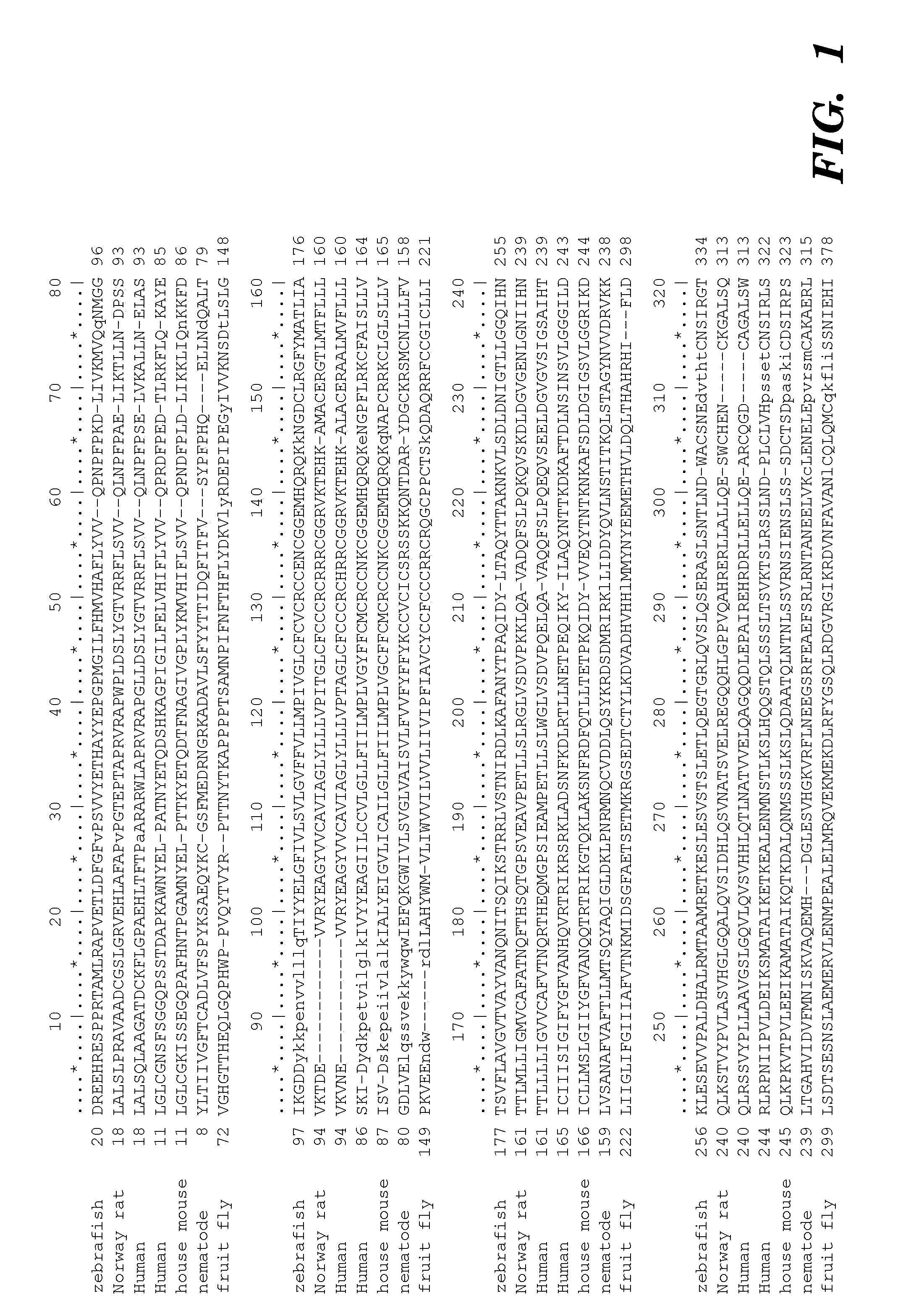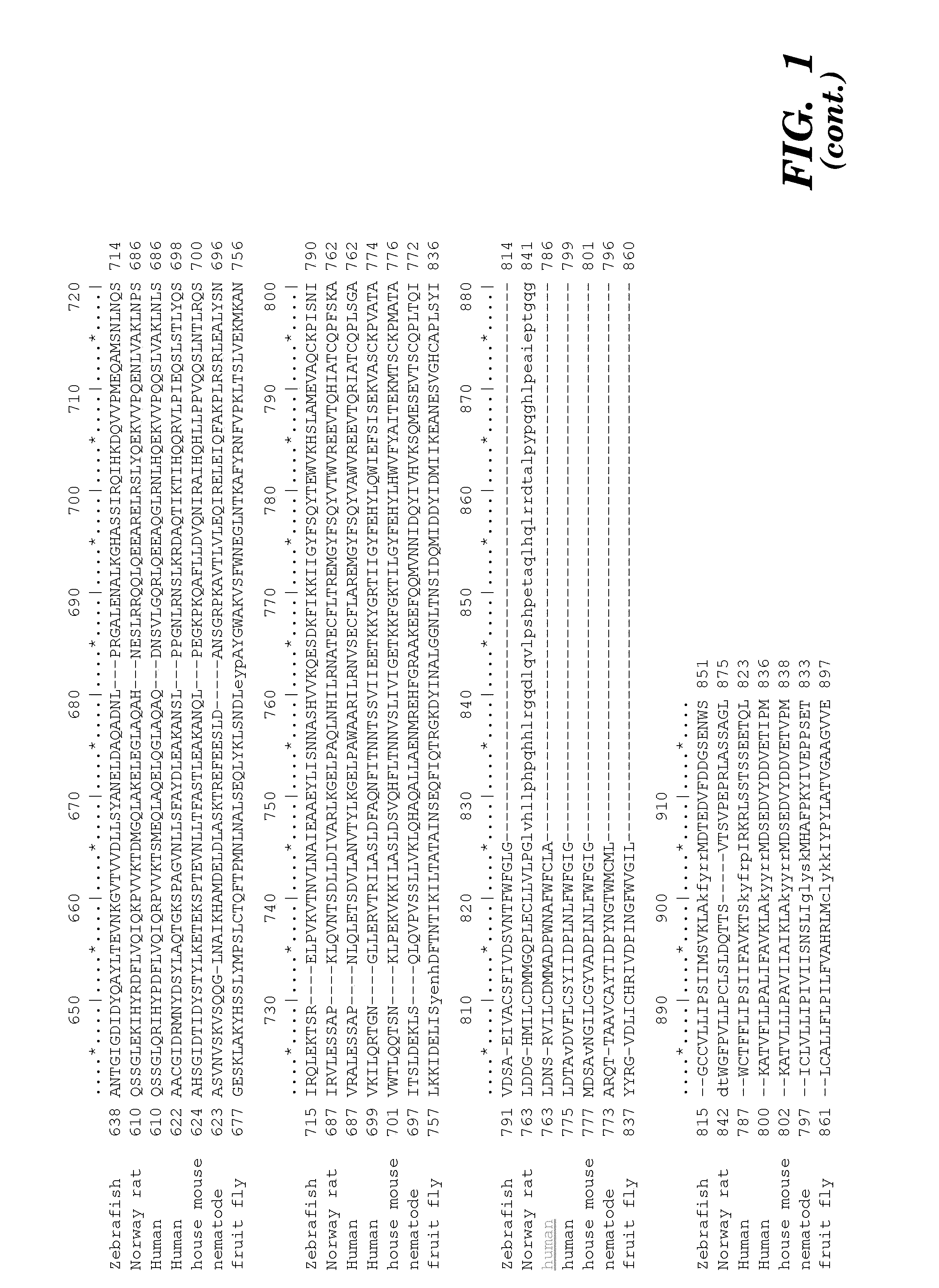Prominin-1 peptide fragments and uses thereof
a technology of proangiogenic factors and peptides, which is applied in the direction of peptide/protein ingredients, angiogenin, metabolism disorders, etc., can solve problems such as pathological angiogenesis, and achieve the effects of promoting vegf binding, promoting endothelial cell proliferation, and enhancing angiogenesis and cell migration
- Summary
- Abstract
- Description
- Claims
- Application Information
AI Technical Summary
Benefits of technology
Problems solved by technology
Method used
Image
Examples
example 1
Seven 12-Mer Peptides Derived from Prominin-1 Sequence Bind VEGF
[0372]Minimum epitope assignment was based on immunostaining of ABIMED spot peptide arrays prepared at the MIT Biopolymers Facility (FIG. 2). Each spot comprised a 12-mer contiguous peptide, and depending on the number of residues in the antigen of interest, 3-residue offset was used to cover the entire antigen sequence. For 3-residue offset, spot 1 contains sequence 1-12, spot 2 contains sequence 3-15, spot 3 contains sequence 6-18, etc. The Cellulose-bound peptide membrane was preincubated with T-TBS blocking buffer (TBS, pH 8.0 / 0.05% Tween 20 in the presence of blocking reagent; Roche Diagnostics chemiluminescence detection kit 1500694). Subsequently, the peptide array was incubated with hVEGF at a final concentration of 1.0 μg / ml for 2 h in T-TBS blocking buffer. After washing three times for 10 min with T-TBS the anti-hVEGF antibody (Quantum Biotechnologies, Montreal), was added to a final concentration of 11 g / ml ...
example 2
Peptide 237 Derived from the Extracellular Domain of Prominin Dramatically Increases VEGF Binding to Endothelial and B16-F10 Melanoma Cells
[0373]In order to characterize the effect of the peptides on VEGF binding to endothelial and melanoma cells, the cells were incubated with various peptides (720 μg / ml) in the presence of h25-VEGF (12 ng / ml) (FIG. 3). Peptide #237 increased VEGF binding to endothelial as well to melanoma cells. 10000 cells were incubated in binding buffer containing 20 mM Hepes, 0.1% BSA and I125-VEGF (12 ng / ml) for 3 h on ice. Following 3 washings, the radioactive levels were determined by gamma counter. An increase of more than 25 times in I125-VEGF binding was observed when peptide #237 was added to both kinds of cells. All other peptides had no effect on VEGF binding.
example 3
Determination of the Essential Amino Acids for VEGF Binding in Peptide #237
[0374]To characterize which are the essential amino acids within the #237 peptide that are crucial to accelerate VEGF binding to the cells, three shorter peptides were designed as presented at Table 2. The cells were treated with the smaller peptides in the same way as described in FIG. 3. 10000 cells were incubated in binding buffer containing 20 mM Hepes, 0.1% BSA, I125-VEGF (12 ng / ml) and 100 μg / ml of each peptide, for 3 h on ice. Following 3 washings with binding buffer, the radioactive levels were determined using a gamma counter. It is concluded that the first 6-mer peptide (#237A) is not crucial to enhance VEGF binding to cells whereas the second 6-mer (#237B) shows a partial increase in VEGF binding to endothelial cells and better binding to melanoma cells. In addition, the amino acids valine and alanine, located in the C terminus of the peptide, were found to be crucial in the VEGF binding process. W...
PUM
| Property | Measurement | Unit |
|---|---|---|
| size | aaaaa | aaaaa |
| molecular weight | aaaaa | aaaaa |
| molecular weight | aaaaa | aaaaa |
Abstract
Description
Claims
Application Information
 Login to View More
Login to View More - R&D
- Intellectual Property
- Life Sciences
- Materials
- Tech Scout
- Unparalleled Data Quality
- Higher Quality Content
- 60% Fewer Hallucinations
Browse by: Latest US Patents, China's latest patents, Technical Efficacy Thesaurus, Application Domain, Technology Topic, Popular Technical Reports.
© 2025 PatSnap. All rights reserved.Legal|Privacy policy|Modern Slavery Act Transparency Statement|Sitemap|About US| Contact US: help@patsnap.com



